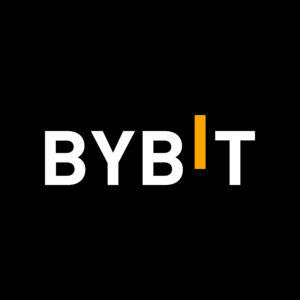XRP staking is a term often misused to describe earning rewards by depositing XRP on platforms like Binance, Nexo, Bybit, or Kraken. The truth is, XRP does not support staking because the XRP Ledger (XRPL) uses the Ripple Protocol Consensus Algorithm (RPCA).
Instead, what is called “XRP staking” is typically a platform-based program where users lock XRP, and the platform uses it for lending, liquidity pools, or other financial activities, sharing profits as rewards.
This guide will cover what XRP staking is, whether XRP supports traditional staking, how to earn passive income with your XRP tokens, and the best practices to earn high rewards on XRP.
What Is XRP Staking?
XRP staking refers to locking up XRP tokens to earn rewards or interest. XRP staking is not native to the XRP Ledger (XRPL) as it uses the Ripple Protocol Consensus Algorithm (RPCA), which relies on a network of trusted validators rather than staking or mining.
As a result, what is often marketed as “XRP staking” typically involves lending XRP to centralized platforms, such as cryptocurrency exchanges or DeFi services, or participating in liquidity pools. These platforms use the deposited XRP for activities like lending to borrowers or providing liquidity, and you receive interest or rewards in return. So, XRP staking, in this context, is a way to generate passive income without contributing directly to the XRPL’s operations.
Can You Stake XRP?
No, XRP cannot be staked in the traditional sense due to the XRPL’s consensus mechanism, which does not support PoS. However, users can use alternative methods to earn rewards on their XRP holdings.
The popular centralized exchanges like Binance, Nexo, or Kraken offer programs often labeled as “XRP staking,” but these are essentially interest-bearing accounts or lending services. You have to deposit XRP, and then the platform lends it to borrowers or uses it for liquidity, and shares earn profits with you as rewards. Some DeFi platforms also allow XRP holders to contribute to liquidity pools or yield farming, which can generate returns.
Does XRP Support Traditional Staking?
No, XRP does not support traditional staking because the XRP Ledger does not operate on a proof-of-stake consensus mechanism.
“Traditional staking involves locking tokens to validate transactions and secure a blockchain, as seen in networks like Ethereum or Solana.”
The XRPL, however, uses the Ripple Protocol Consensus Algorithm (RPCA). Here, a set of trusted validators is selected from a Unique Node List (UNL), which confirms transactions without requiring staking or mining. This design mainly prioritizes speed, efficiency, and low transaction costs, and hence eliminates the need for token staking to maintain network security.
XRP Staking vs. XRP Lending: What’s the Difference?
Traditional crypto staking involves locking up cryptocurrency to support a network’s operations, such as validating transactions, and earning rewards in return. But there is no traditional XRP staking method.
XRP lending involves providing your XRP to borrowers through various platforms. In return, you earn interest payments. This method allows you to generate passive income from your XRP holdings.
Here is a quick comparison between XRP staking and XRP lending:
| XRP Staking | XRP Lending | |
| Definition | Locking XRP to earn rewards by supporting network operations (no native staking supported) | Involves lending XRP to borrowers through centralized or decentralized platforms to earn interest |
| Mechanism | Involves participating in network consensus (not applicable to XRP) | XRP is provided to platforms that lend it to borrowers, who pay interest, part of which is passed to the lender |
| Platforms | Binance, Nexo, Kraken, YouHodler, Crypto.com | Binance, Nexo, EarnPark, YouHodler, Crypto.com, and some DeFi platforms |
| Reward Rates | Typically 0.8–7% APY | Generally, 5–12% APY |
| Lock-up Period | Flexible (withdraw anytime, lower rates) or fixed (30–360 days, higher rates) | Flexible (withdraw anytime, lower rates) or fixed |
| Risks | Platform insolvency, market volatility, impermanent loss in liquidity pools, and counterparty risk | Borrower default, platform security breaches, market volatility, and potential loss if the collateral value drops |
Benefits of Lending XRP
Here are some key benefits of lending XRP:
- Passive Income Generation: Lending XRP on platforms like Nexo, Binance, or EarnPark offers interest rates typically ranging from 5% to 12% APY. This provides a steady income stream without active trading.
- Flexible Terms: Many platforms offer flexible lending options, allowing users to withdraw XRP at any time with lower interest rates.
- Low Entry Barriers: Lending XRP requires minimal technical knowledge compared to trading or DeFi yield farming.
- Diversification of Investment: Lending XRP diversifies an investor’s portfolio by generating returns independent of market price movements. Even in bearish markets, interest payments provide consistent income.
- Support for Financial Services: By lending XRP, users enable platforms to facilitate trading, margin loans, or liquidity provision, indirectly supporting the crypto ecosystem.
- Global Accessibility: XRP lending is available on centralized exchanges and DeFi platforms worldwide, allowing users from various regions to participate.
Challenges of Lending XRP
Of course, lending XRP offers benefits, but it also involves significant challenges that users must consider. Below are some key risks or challenges:
- Platform Risk: Centralized platforms like Binance or Nexo face risks of insolvency, hacks, or mismanagement. Historical incidents, such as exchange bankruptcies, highlight the potential for loss of lent XRP if the platform fails.
- Borrower Default Risk: If borrowers fail to repay loans, platforms may struggle to pay interest or return principal. While some platforms use collateral, falling collateral values during market downturns can lead to losses.
- Regulatory Uncertainty: Cryptocurrency lending faces varying regulations globally. Changes in laws, such as restrictions on crypto lending in certain jurisdictions, could limit access or impose penalties.
- Counterparty Risk in DeFi: Decentralized lending platforms, while non-custodial, rely on smart contracts that may contain vulnerabilities. Bugs or exploits could lead to loss of lent XRP, and users must trust the protocol’s security.
Where to stake XRP? Best Exchange to stake XRP
You can stake XRP on popular crypto staking platforms, such as Binance, Kraken, and Bybit. These platforms offer different options and interest rates.
1. Binance XRP Staking
Binance lets you stake XRP using its Simple Earn feature. It offers a 0.64% APY with a flexible term, and your principal stays safe. You can also use Dual Investment, which offers higher returns between 3.7% to 128.74%, but it comes with higher risk. In Dual Investment, your earnings depend on market price changes, so you may not always get XRP back. It suits advanced users who understand price risks.


2. Kraken XRP Staking
Kraken offers a competitive interest rate of 1% APY for staking XRP. It’s a simple and safe option. Kraken is known for strong security and user-friendly design. It’s a good choice if you want steady, low-risk earnings. You can unstake anytime without a long lock-up period.
3. Bybit XRP Staking
Bybit offers 0.70% APY on XRP staking. It is also flexible, so you can withdraw at any time. The platform is easy to use and has no complex rules. Bybit is ideal if you want a simple and low-risk staking experience. It’s good for short-term holders.


How to Stake XRP (Ripple)?
To stake XRP (Ripple), you need to follow a few simple steps. Here, we will be showing you how to stake XRP on the Binance exchange. You can use any exchange of your choice, the steps are mostly the same.
Step 1: Create an Account and Complete KYC
First, you need to register for an account on a crypto exchange that has XRP staking available. Some of the most reliable platforms or popular XRP staking platforms are Binance, Kraken, and Bybit. Visit the website of the exchange you prefer. Begin the sign-up process by providing your email address and coming up with a password.
Once you’ve signed up for your account, you need to undergo the KYC process. KYC stands for “Know Your Customer,” and it is necessary to confirm your identity. You will have to upload a valid identification, like a passport or driver’s license. Some exchanges will also request a selfie or proof of residence. This is necessary for security purposes and adhering to legal regulations. When your identity has been confirmed, your account will be active.
Step 2: Deposit XRP or Buy XRP
Next, you will need to deposit XRP into your account. If you currently have XRP in some other Ripple wallet, then you can simply transfer it into the exchange.
Visit your exchange wallet and go to “Deposit”. Take note of the address and use that in your other wallet to deposit the XRP. Double-check the address to be sure when sending.
In case you do not have any XRP, you can just purchase it within the exchange directly. Navigate to the trading platform, select a trading pair such as XRP/USDT, and purchase it. After your XRP has been deposited in your wallet, you are prepared for the final step.
Step 3: Stake XRP Tokens
Finally, you can stake your XRP to collect rewards. Navigate to the earning or staking section of the platform. For Binance, you can employ the “Simple Earn” tool. It is flexible staking with a limited APY, but it keeps your principal safe.
Select XRP from the list of assets and pick the staking plan. Approve the amount you wish to stake and go through the process. Your XRP will be locked or reserved under the staking service on the platform. As a reward, you will get daily rewards directly into your wallet.
Alternative Ways to Earn Rewards Without Staking XRP
Since the XRP Ledger (XRPL) does not support traditional staking due to its Ripple Protocol Consensus Algorithm (RPCA), you can obviously explore alternative methods to earn rewards on your XRP holdings.
1. Staking Other Cryptocurrencies
Staking other cryptocurrencies means locking up tokens in proof-of-stake (PoS) blockchains to help secure the network and earn rewards. Unlike XRP, which does not support staking, coins like Ethereum, Solana, or Cardano let you stake tokens to validate transactions.
You can exchange your XRP for these assets on the best crypto exchanges like Binance, Bybit, MEXC, Coinbase, then stake them on services such as Binance, Kraken, Lido, or wallets like MetaMask. For instance, Ethereum staking through Lido offers around 3–4% annual returns. Rewards come in the staked cryptocurrency, and lock-up periods vary. This option works well if you’re open to diversifying beyond XRP to earn steady income while supporting blockchain networks.
2. Liquidity Provisions: Provide XRP for Trading Rewards
Liquidity provision involves depositing your XRP into liquidity pools to support trading and earn rewards. On DEXs, you can pair your XRP tokens with another asset, like USDT, in a pool and earn a share of trading fees—usually 0.1–0.3% per trade.
Centralized platforms like Binance also have liquidity programs where your XRP supports trading pairs, with rewards paid in XRP or other tokens. This method suits you if you’re comfortable with DeFi and want higher returns by actively participating in markets.
3. Wrapped XRP (wXRP)
Wrapped XRP (wXRP) is a version of XRP made for use on other blockchains, like Ethereum, where regular XRP cannot operate.
You can mainly create wXRP by locking your XRP in a custodial contract, which issues an equal amount of wXRP (1:1 value You can stake wXRP on platforms like Flare to earn rewards, such as Flare’s native token (FLR), with annual returns of about 2–5%.
You can also use wXRP in DeFi protocols for lending or liquidity pools to earn more. Remember, converting XRP to wXRP involves bridging services like Wanchain, which charge fees and carry risks from the custodian.
4. XRP Lending
XRP lending means giving your XRP to platforms that lend it to borrowers, who pay interest that you partly receive. As discussed above, centralized platforms like Nexo, Binance, and EarnPark offer XRP lending with annual returns of 5–12%.
You have to deposit your XRP, which is lent to traders or institutions, with options for flexible withdrawals or fixed terms, like 30 days. Decentralized platforms like Aave also support XRP lending via smart contracts, though options are fewer. Also, lending is generally simple, but it needs little technical know-how.
5. Yield Farming with XRP
Yield farming involves using your XRP in DeFi protocols to earn high returns through strategies like liquidity provision, lending, or staking in reward pools. For example, an XRP/USDT pool might pay trading fees plus extra tokens. Yield farming requires active effort, like reinvesting rewards or switching pools to boost returns.
Best Practices for Earning Interest With XRP
- Select Top Staking Platforms: You must choose established platforms that have a sound reputation for reliability and security. Centralized platforms, such as Nexo or Binance, are secure, with millions of users. For decentralized finance (DeFi), protocols like PancakeSwap or Aave should be used, having been audited for the security of smart contracts.
- Understand Risks Involved: Before investing your XRP, spend some time understanding risks such as platform insolvency, borrower default, or market volatility. For instance, centralized platforms are susceptible to hacks, whereas DeFi pools are exposed to impermanent loss. Study the platform’s insurance policies or collateral mechanisms. Understanding these risks assists you in determining how much XRP to invest and whether to avail yourself of flexible or fixed plans.
- Start Small and Diversify: If you’re new to earning interest with XRP, begin with a small amount to test the platform and process. Spread your XRP across multiple platforms or methods, like lending and yield farming, to reduce the impact of any single platform’s failure or market downturn.
- Compare Reward Rates and Terms: The interest rates and lock-up times differ on various platforms, so compare them keenly. Binance may be offering 1% APY for non-locked lending, while EarnPark offers up to 5% for fixed lending. Look out for withdrawal fees or minimum deposits.
- Stay Informed About Regulations: Cryptocurrency regulations vary by country and can affect your ability to earn interest. For example, some regions have restricted crypto lending. Monitor local laws and platform compliance to avoid unexpected restrictions.
- Secure Your Accounts and Assets: Keep your XRP safe by turning on two-factor authentication (2FA) and storing DeFi activities in secure hardware wallets. Never share your private keys or login credentials. For DeFi, only engage with smart contracts that have been verified to avoid scams. Also, if possible, withdraw your earned interest to a personal wallet regularly to minimize exposure to platform risks, keeping your funds secure.
Conclusion
In a nutshell, XRP staking is a simple way to earn passive income by holding your XRP on trusted platforms. While XRP does not use proof of stake, some exchanges like Binance, Kraken, and Bybit offer flexible staking options with small but steady rewards.
Earning rewards with XRP offers various opportunities, even though traditional staking is not possible due to the XRP Ledger’s unique design. Methods like lending, liquidity provision, yield farming, and using wrapped XRP allow you to generate passive income, each with distinct benefits like steady returns or high yields.
FAQs
Where is the best place to stake Ripple?
Binanceis one of the best places to stake XRP. It offers flexible staking through Simple Earn with 0.64% APY. It also has a Dual Investment option that gives higher returns (3.7%–128.74%) with more risk.
Binance gives you more ways to earn based on your risk level. You can choose low-risk, flexible staking or try high-return options. The platform is easy to use and trusted by many. If you want steady earnings with safety, Simple Earn is best. If you understand risks, Dual Investment can give higher rewards.
Can you stake XRP on Ledger?
No, you cannot directly stake XRP on a Ledger wallet. Ledger Live does not support XRP staking. Ledger is a hardware wallet, mainly used for storing XRP securely offline. It supports staking for other coins like Ethereum or Tezos, but not XRP. You can hold XRP safely in Ledger, but to earn staking rewards, you must send it to an exchange that offers XRP staking like Binance, Kraken, or Bybit.
Is XRP proof of stake or proof of work?
XRP uses neither proof of stake nor proof of work. It uses a consensus protocol called the Ripple Protocol Consensus Algorithm (RPCA). In XRP’s system, validators agree on transactions through consensus rather than mining or staking. This method is faster, uses less energy, and allows quick transaction times.
Can Ripple XRP reach $50? If yes, by around what time?
It is possible, but very unlikely in the near future. XRP would need a market cap of over $2.9 trillion to reach $50. This market cap is even higher than the BTC market cap.
This price target depends on major global adoption of XRP, large institutional use, and full regulatory clarity. Current growth trends do not support such a price soon. Some long-term investors believe it could happen in 10–20 years, but this is purely speculative. No expert or official source can predict an exact time for XRP to reach $50. It’s better to focus on realistic short-term goals.
How to earn passive income from XRP?
You can earn passive income from XRP by staking it on exchanges like Binance, Bybit, or Kraken. These platforms offer flexible or fixed options for XRP staking. You deposit XRP and earn a small percentage (around 0.64% to 1% APY). You can also use other methods like liquidity mining, farming, and lending.
 Bitcoin
Bitcoin  Ethereum
Ethereum  Tether
Tether  XRP
XRP  USDC
USDC  Solana
Solana  TRON
TRON  Lido Staked Ether
Lido Staked Ether  Dogecoin
Dogecoin  Figure Heloc
Figure Heloc  Cardano
Cardano  Bitcoin Cash
Bitcoin Cash  WhiteBIT Coin
WhiteBIT Coin  Wrapped stETH
Wrapped stETH  Wrapped Bitcoin
Wrapped Bitcoin  USDS
USDS  Wrapped eETH
Wrapped eETH  Binance Bridged USDT (BNB Smart Chain)
Binance Bridged USDT (BNB Smart Chain)  Chainlink
Chainlink  Zcash
Zcash  Monero
Monero  LEO Token
LEO Token  WETH
WETH  Stellar
Stellar  Coinbase Wrapped BTC
Coinbase Wrapped BTC  Ethena USDe
Ethena USDe  Hyperliquid
Hyperliquid  Litecoin
Litecoin  Avalanche
Avalanche  Sui
Sui  Hedera
Hedera  sUSDS
sUSDS  Uniswap
Uniswap  Shiba Inu
Shiba Inu  Dai
Dai  USDT0
USDT0  Canton
Canton  Toncoin
Toncoin  World Liberty Financial
World Liberty Financial  PayPal USD
PayPal USD  Cronos
Cronos  Ethena Staked USDe
Ethena Staked USDe  Mantle
Mantle  USD1
USD1  Polkadot
Polkadot  Rain
Rain  MemeCore
MemeCore  Bitget Token
Bitget Token 


